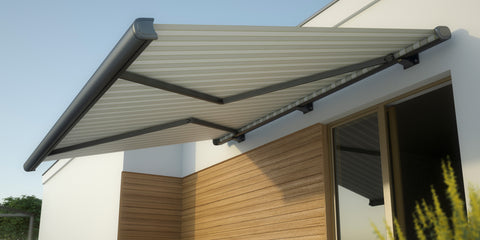When attaching heavy attachments
...such as awnings, three factors are important:
1. The supporting building structure
2. The construction of the facade
3. The loads from self-weight and acting forces
In order to avoid damage to life and limb, special heavy-duty fastenings should be used. The subsoil, the dead weight of the awning and the loads to be applied are decisive for choosing the right dowel. These loads must be calculated individually before each installation. Test drilling can help to define the subsoil and thus the corresponding loads. In principle, the fasteners with which the awnings are installed should have a general building inspectorate or a European technical approval ( ETA ).
When installing an awning in concrete, non-rusting metal dowels (e.g. CF BA A4 or CF BA PRO A4 bolt anchors) should be used. These can be inserted into the cleaned drill hole with just a few hammer blows and can be loaded immediately. The anchoring depth regulated in the approval can be individually adjusted by the installer, thereby maximizing the load-bearing capacity if necessary.
In the event that the awning is fixed in masonry (solid and perforated brick, aerated concrete ) or edge and axis distances do not allow the use of metal dowels/bolt anchors in concrete, a chemical dowel (CHEMOFAST VK) is suitable for anchoring. The cleaned borehole is filled with the injection mortar from the bottom up to 2/3 of the borehole depth. Finally, insert the anchor rod and let it harden. A perforated sleeve is additionally used for anchoring in masonry. After curing, the anchor rod forms a solid bond with the substrate. Borehole cleaning is of enormous importance for the viability of the injection system. If the borehole is not cleaned, the load capacity can be reduced by up to 50%.
The following generally applies: An awning should be installed by a specialist company, since improper installation can result in personal injury and damage to property.



